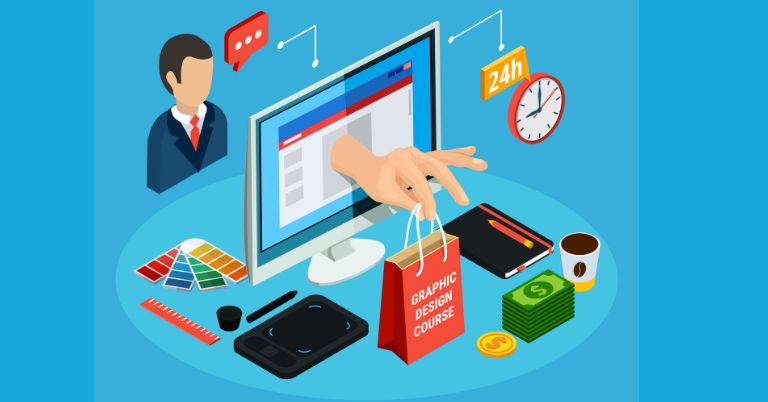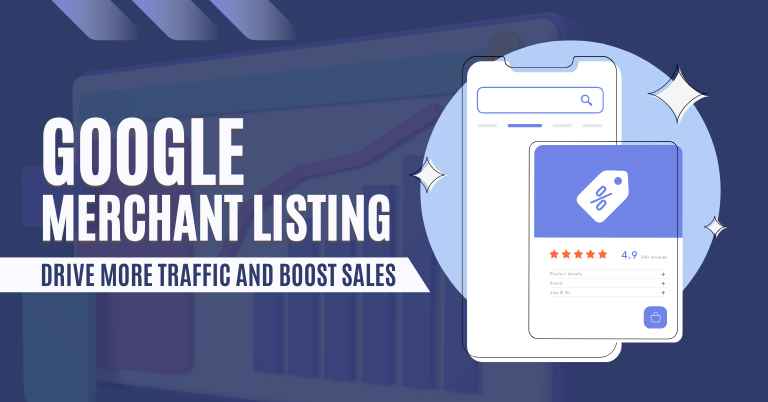It typically takes several months to start making money with e-commerce. However, the time frame can vary depending on various factors such as the niche, marketing strategies, and product demand.
In this modern digital era, e-commerce has become increasingly popular as a means to generate income. Many individuals and businesses alike are taking advantage of this lucrative opportunity. While the potential for profitability is high, it’s important to note that success in e-commerce doesn’t happen overnight.
It requires careful planning, consistent effort, and effective execution. Understanding the timeline for making money with e-commerce can help set realistic expectations and enable you to develop a strategic approach to achieving your financial goals.
Let's See the Topic Overview
Understanding The Timeframe For E-commerce Success
Starting an e-commerce business can be an exciting venture, but it’s important to have realistic expectations about how long it takes to start making money. While some entrepreneurs strike gold quickly, others may face challenges along the way. In this section, we will explore the factors that influence the timeline for e-commerce success and discuss common challenges and roadblocks.
Factors That Influence The Timeline:
- Niche selection: The type of products you choose to sell can significantly impact how quickly you start making money. Some niches are more competitive and saturated, while others have a higher demand and less competition. Finding a profitable niche that aligns with your passions can help expedite your success.
- Marketing strategy: A well-executed marketing strategy can greatly impact how long it takes to generate sales. Utilizing various online channels such as social media advertising, search engine optimization (SEO), email marketing, and influencer collaborations can drive traffic to your e-commerce store and increase conversions.
- Website optimization: Your e-commerce website’s design, user experience, and speed play a crucial role in attracting and retaining customers. A poorly optimized website can deter potential buyers and slow down your progress. Focusing on enhancing the overall user experience can reduce the time it takes to make money.
- Customer trust: Building trust with your potential customers takes time and effort. Factors that contribute to trust include customer reviews, testimonials, secure payment gateways, and clear return policies. Establishing trust early on can lead to quicker sales and repeat customers.
- Pricing strategy: Setting the right prices for your products is essential for profitability and attracting customers. Conduct market research to understand your competitors’ pricing strategies and determine the optimal price point that balances demand and profitability.
Common Challenges And Roadblocks:
- Finding reliable suppliers: Securing trustworthy suppliers can be a roadblock in the e-commerce journey. It may take time to find suppliers who offer quality products at competitive prices. Research, vetting, and building relationships with suppliers are crucial steps in overcoming this challenge.
- Inventory management: Balancing supply and demand can be tricky, especially when starting an e-commerce business. Overestimating or underestimating demand can lead to inventory issues, affecting customer satisfaction and revenue. Implementing effective inventory management systems and forecasting techniques can help mitigate this challenge.
- Technical issues: E-commerce platforms or website glitches can hinder the smooth operation of your online store. Technical issues such as server crashes, payment gateway errors, or broken links can result in lost sales opportunities. Regular monitoring, maintenance, and prompt issue resolution are essential.
- Competition: The e-commerce landscape is highly competitive, with numerous businesses vying for customers’ attention. Standing out in a crowded marketplace can be challenging, and it may take time to build brand awareness and gain a competitive edge. Implementing unique value propositions and differentiation strategies is crucial.
- Cash flow: Generating consistent revenue in the early stages of an e-commerce business can be difficult. Slow sales can strain cash flow and limit growth opportunities. Proper financial planning, including monitoring expenses, managing profit margins, and considering alternative funding options, can help navigate this challenge.
By understanding the factors that influence the timeline for e-commerce success and being aware of common challenges and roadblocks, you can strategize and make informed decisions to propel your business forward. Remember, patience, persistence, and adaptability are key to achieving long-term success in the eCommerce industry.
Setting Realistic Expectations For E-commerce Success
Launching an e-commerce business is an exciting venture, but it’s important to set realistic expectations for success. Many aspiring entrepreneurs are eager to know how long it will take to start making money with e-commerce. In this section, we will explore the importance of patience and persistence, as well as the significance of nurturing your brand and building trust.

The Importance Of Patience And Persistence
Patience and persistence are key when it comes to achieving success in the eCommerce industry. It’s essential to understand that building a profitable online business takes time and effort. Here are a few key points to consider:
- Building an online presence: Developing a strong online presence is crucial for e-commerce success. This involves creating a well-designed website, optimizing it for search engines, and effectively utilizing social media platforms.
- Developing a customer base: It takes time to acquire and retain customers. Implementing marketing strategies, such as email campaigns, social media advertising, and content marketing, can help generate traffic and convert visitors into customers.
- Testing and refining: It’s rare to achieve immediate success with your e-commerce business. Testing different marketing strategies, product offerings, pricing models, and website designs is essential to optimize your business and improve conversions over time.
Nurturing Your Brand And Building Trust
Investing in your brand and building trust with your customers is imperative for long-term success in e-commerce. Consider the following key points:
- Consistent branding: Establishing a strong brand identity across all your marketing channels helps customers recognize and remember your business. Consistency in design, messaging, and tone helps build trust and credibility.
- Exceptional customer service: Providing excellent customer service goes a long way in fulfilling customer expectations and building trust. Respond promptly to inquiries, resolve issues efficiently, and go the extra mile to ensure customer satisfaction.
- Social proof and reviews: Positive reviews, testimonials, and social proof can significantly impact customer trust and purchase decisions. Encourage satisfied customers to leave reviews and showcase them on your website.
- Building a loyal customer base: Repeat customers are more likely to make frequent purchases and recommend your business to others. Implement strategies such as loyalty programs, personalized offers, and exclusive promotions to nurture customer loyalty.
Remember, success in e-commerce doesn’t happen overnight. It requires patience, persistence, and strategic efforts. By setting realistic expectations and investing in brand building and customer trust, you can set yourself up for long-term success in the competitive world of e-commerce.
Strategies For Accelerating E-commerce Revenue Growth
Making money with e-commerce can be an exciting prospect, but many aspiring entrepreneurs wonder: how long does it actually take? While there is no one-size-fits-all answer to this question, there are strategies you can implement to accelerate your e-commerce revenue growth.
In this section, we will explore two key strategies that can help you expedite your journey to profitability: leveraging effective marketing channels and optimizing conversion rates while increasing customer lifetime value.
Leveraging Effective Marketing Channels
To maximize your e-commerce revenue, your products and brand need to be visible to the right audience. By leveraging effective marketing channels, you can drive targeted traffic and increase your chances of making sales. Here are some key points to consider:
- Search engine optimization (SEO): By optimizing your website for search engines, you can improve your organic rankings and attract more potential customers. Focus on keyword research, on-page optimization, and building high-quality backlinks to boost your visibility in search engine results.
- Social media marketing: Utilize social media platforms like Facebook, Instagram, and Twitter to reach and engage with your target audience. Develop a content strategy that includes compelling visuals, relevant hashtags, and consistent brand messaging to drive traffic to your e-commerce store.
- Email marketing: Building an email list allows you to nurture relationships with potential customers. Create engaging email campaigns that provide value, such as exclusive offers, personalized recommendations, and useful content. Use email marketing automation to streamline your efforts and optimize conversions.
Optimizing Conversion Rates And Increasing Customer Lifetime Value
Converting website visitors into paying customers is crucial for e-commerce success. Additionally, increasing the lifetime value of your customers can have a substantial impact on your revenue growth. Here’s how to optimize your conversion rates and increase customer lifetime value:
- Streamlined checkout process: Make the checkout process as seamless and convenient as possible. Minimize the number of steps required to complete a purchase, offer guest checkout options, and provide clear and visible shipping and return information.
- Personalized user experience: Tailor your website’s user experience to individual customers by implementing personalization techniques. Leverage data such as browsing behavior, past purchases, and demographic information to deliver relevant product recommendations and personalized offers.
- Customer retention strategies: It’s more cost-effective to retain existing customers than acquire new ones. Implement customer retention strategies such as loyalty programs, personalized follow-up emails, and exceptional customer service to encourage repeat purchases and increase customer lifetime value.
Remember, success in e-commerce takes time and effort. By implementing these strategies and continuously analyzing and optimizing your results, you can expedite your e-commerce revenue growth and start making money sooner than you may think.
Timeframes Vary, But Success Is Possible
Embracing The Journey And Learning From Failures
Starting an e-commerce business can be an exciting venture, filled with dreams of financial success. However, it’s important to remember that success doesn’t happen overnight. It takes time, effort, and a willingness to learn from both successes and failures along the way.
Here are some key points to keep in mind as you embark on your e-commerce journey:
- Embrace the learning process: Building a successful e-commerce business is a journey that involves constant learning and adapting. Be open to new ideas, strategies, and technologies that can help you stay ahead of the competition.
- Learn from failures: Failure is a natural part of any entrepreneurial journey. Instead of dwelling on mistakes, use them as opportunities for growth and improvement. Analyze what went wrong, adjust your strategy, and try again.
- Develop a growth mindset: A growth mindset is essential for long-term success in e-commerce. It’s about being open to challenges, embracing obstacles as opportunities, and persisting in the face of setbacks. Cultivate a positive mindset that allows you to see failures as stepping stones to success.
- Seek out mentors and industry experts: Don’t be afraid to reach out to experienced e-commerce entrepreneurs and industry experts for guidance. Learning from the wisdom of others who have already achieved success can save you time and help you avoid common pitfalls.
Persisting With The Right Strategies For Long-term Success
Making money with e-commerce requires persistence and the implementation of effective strategies. While success timelines may vary, there are key strategies you can adopt to increase your chances of long-term success:
- Build a solid foundation: Invest time and effort in building a strong foundation for your e-commerce business. This includes creating a user-friendly website, implementing effective SEO strategies, and focusing on excellent customer service.
- Develop a robust marketing plan: A comprehensive marketing plan is crucial for attracting and retaining customers. Utilize social media marketing, content marketing, email marketing, and other digital marketing techniques to reach your target audience and promote your products.
- Optimize for search engines: Implementing SEO strategies will help increase your website’s visibility in search engine results, driving organic traffic to your e-commerce store. Focus on keyword research, optimizing product descriptions, and obtaining high-quality backlinks to improve your search engine rankings.
- Leverage the power of email marketing: Building an email list and utilizing email marketing campaigns can help you nurture relationships with your customers and drive repeat sales. Implement automated email sequences, offer exclusive promotions, and provide valuable content to engage your audience.
- Stay ahead of trends and technology: E-commerce is an ever-evolving industry, so staying updated with the latest trends and technological advancements is crucial. Monitor consumer behavior, embrace new technologies, and adapt your strategies accordingly to remain competitive in the market.
Remember, success in e-commerce is a gradual process and varies from business to business. By embracing the journey, learning from failures, and persisting with the right strategies, you can increase your chances of making money and achieving long-term success in the eCommerce industry.
So, stay focused, stay dedicated, and keep learning as you embark on your e-commerce journey.
Conclusion
Overall, the time it takes to make money with e-commerce can vary greatly depending on a multitude of factors. From setting up your online store to driving traffic and converting that traffic into sales, there are numerous steps involved in building a profitable e-commerce business.
While some entrepreneurs may experience success within a few months, for others it may take years to see a substantial return on their investment. One of the most important aspects to consider when determining how long it will take to make money with e-commerce is your strategy.
By implementing a well-thought-out marketing plan, optimizing your website for search engines, and leveraging social media platforms, you can significantly reduce the time it takes to generate sales. In addition, understanding your target audience, choosing the right products to sell, and continuously monitoring and optimizing your e-commerce store are crucial to long-term success.
It’s important to note that e-commerce is a dynamic industry, so it’s essential to stay updated with the latest trends and adapt your strategies accordingly. While there is no definite answer to how long it takes to make money with e-commerce, with the right approach, dedication, and ongoing effort, you can position yourself for success and ultimately generate a steady revenue stream from your online business.












